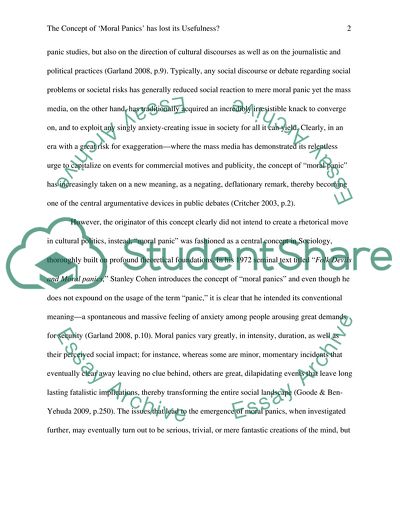Cite this document
(On the Concept of Moral Panic Report Example | Topics and Well Written Essays - 2500 words, n.d.)
On the Concept of Moral Panic Report Example | Topics and Well Written Essays - 2500 words. https://studentshare.org/sociology/1810526-course-criminology-unit-crime-and-media-essay-question-the-concept-of-moral-panics-has-lost-its-usefulness-discuss
On the Concept of Moral Panic Report Example | Topics and Well Written Essays - 2500 words. https://studentshare.org/sociology/1810526-course-criminology-unit-crime-and-media-essay-question-the-concept-of-moral-panics-has-lost-its-usefulness-discuss
(On the Concept of Moral Panic Report Example | Topics and Well Written Essays - 2500 Words)
On the Concept of Moral Panic Report Example | Topics and Well Written Essays - 2500 Words. https://studentshare.org/sociology/1810526-course-criminology-unit-crime-and-media-essay-question-the-concept-of-moral-panics-has-lost-its-usefulness-discuss.
On the Concept of Moral Panic Report Example | Topics and Well Written Essays - 2500 Words. https://studentshare.org/sociology/1810526-course-criminology-unit-crime-and-media-essay-question-the-concept-of-moral-panics-has-lost-its-usefulness-discuss.
“On the Concept of Moral Panic Report Example | Topics and Well Written Essays - 2500 Words”. https://studentshare.org/sociology/1810526-course-criminology-unit-crime-and-media-essay-question-the-concept-of-moral-panics-has-lost-its-usefulness-discuss.


